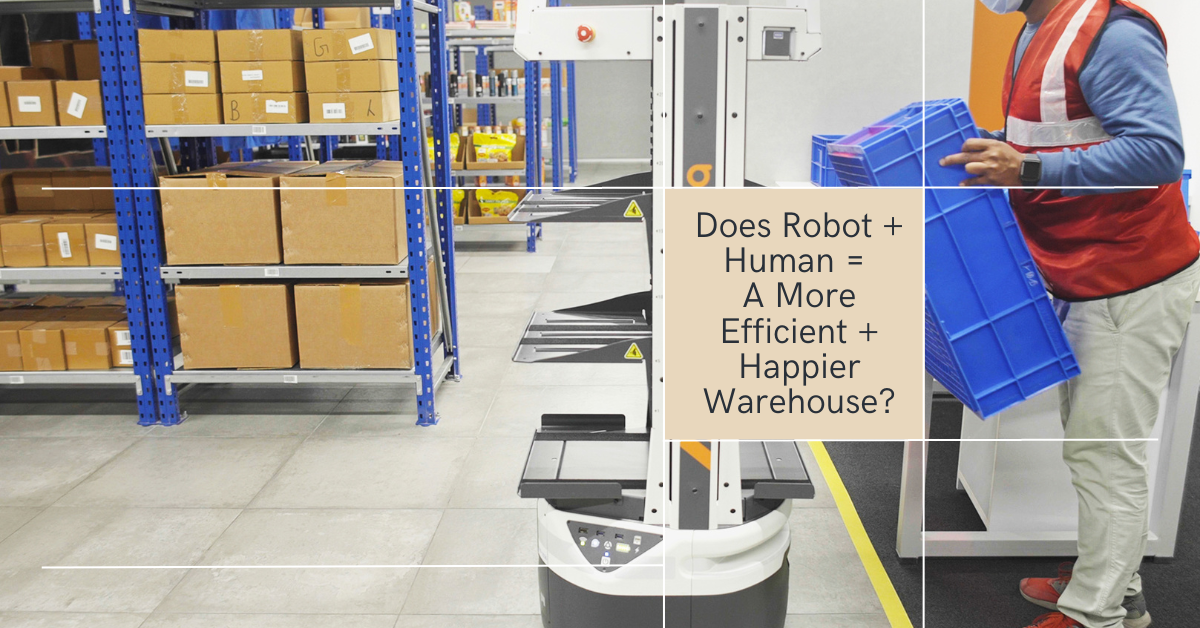


Robots can augment human workers in the warehouse; this will make them more efficient, but will it make warehouses happier places to work too?
Does technology destroy jobs?
Yes, but it creates them too.
So far, very conventional. But when people say technology also creates jobs, they overlook a key point. Of course, technology replaces human labor and in turn, eliminates jobs; that is the whole point. Technology means less human labor is needed to create a given unit of output. The point that is missed is that technology creates the opportunity to create more units of output from the same number of humans, and that is why it creates jobs too.
In recent years, with the rise of online shopping, we have seen a rapid increase in warehouse activity. In the UK, for example, and according to the Office of National Statistics, in 2021, new orders for warehouses were at their highest level since 1985.
The smart warehouse is as inevitable as sunrise. Such change will create much-needed efficiency— that is the reason for it.
It’s a new type of warehouse; pick-and-place robots are here, and the robot workforce is here. To some, the thought of automated warehouses conjures up the image of a dystopian workforce, a kind of rule by machine.
Maybe it would be more accurate to say that the dystopian nightmare was more of a thing of the past. In the past, automation often did create hellish environments in which to work — imagine the Victorian factory. Would you have liked to have worked in one, surrounded by dangerous machinery and toxic fumes?
On the other hand, who could deny that the invention of the robot called the washing machine, which eliminated the drudgery of washing by hand, was a good thing?
The debate over whether automation will destroy jobs was ignited afresh in 2013 when Carl Benedikt Frey and Michael A. Osborne from Oxford University penned a report entitled: “The future of employment: how susceptible are jobs to computerisation?”
Their conclusion: initially, they said 47% of the workforce was vulnerable to job losses. Later, they lowered this estimate to 20%.
But there was no shortage of critics — and the gist of the critique was that Frey and Osborne focused too much on specific tasks that could indeed be replaced by automation, but insufficient attention was applied to the bigger picture — each worker carried out multiple tasks, but only some tasks were susceptible to automation. Ergo went the critique; workers would spend more time on tasks that were not so easily automated.
Since Frey and Osborne said that jobs less likely to be vulnerable to automation included those involving originality, negotiation, social perceptiveness, and assisting or caring for others, the logical inference might be that workers will instead focus on tasks that require those above skills.
On this theme, in a report focused on the UK, PWC stated: “Up to around 30 percent of existing UK jobs are susceptible to automation from robotics and Artificial Intelligence (AI) by the early 2030s, but in many cases, the nature of jobs will change rather than disappear.”
And finally, a more recent report from the World Economic Forum stated: “We estimate that by 2025, 85 million jobs may be displaced by a shift in the division of labour between humans and machines, while 97 million new roles may emerge that are more adapted to the new division of labour between humans, machines and algorithms.”
But there is another history lesson. Not only does technology create new jobs or roles, but it also tends to augment us — contrary to fears that see technology as somehow lessening us.
The innovation called writing enabled us to consider more ideas or variables at a time; it augmented our ability to work on complex problems. The innovation called the shovel augmented our ability to dig. And computers augment our ability to work on complex problems, enabling us to dig deep into complex processes.
As the famous chess player Gary Kasparov, who equally famously was defeated at chess by the IBM computer Big Blue says: “Weak human + machine + better process was superior to a strong computer alone and, more remarkably, superior to a strong human + machine + inferior process.”
This is rather the point; machines and humans working together, provided the process is right, creates better results.
RELATED READ: How to Pick Faster in a Warehouse
This takes us to the happier warehouse.
Most of us prefer tasks involving a degree of creativity, human interaction or originality.
If Frey and Osborn are right, robots can augment us in ways that enable us to do the tasks we prefer. And if the lesson of history continues to apply, the result won’t be fewer jobs. Instead, robots will afford the possibility of work that is more fulfilling.
Workers who sorted, picked and lifted items all day could now have the opportunity to learn new skills. Perhaps the nature of their job shifts from picking and packing to managing or maintaining the robots. And with new opportunities emerges a path to higher-paid work, something in short supply within the manufacturing sector as of late.
Robotic automation will mean more jobs involving social interaction, creativity and originality.
Since these tasks are generally more fun, maybe that means the warehouse equation will look like this: robot + human = more efficient + happier warehouse.